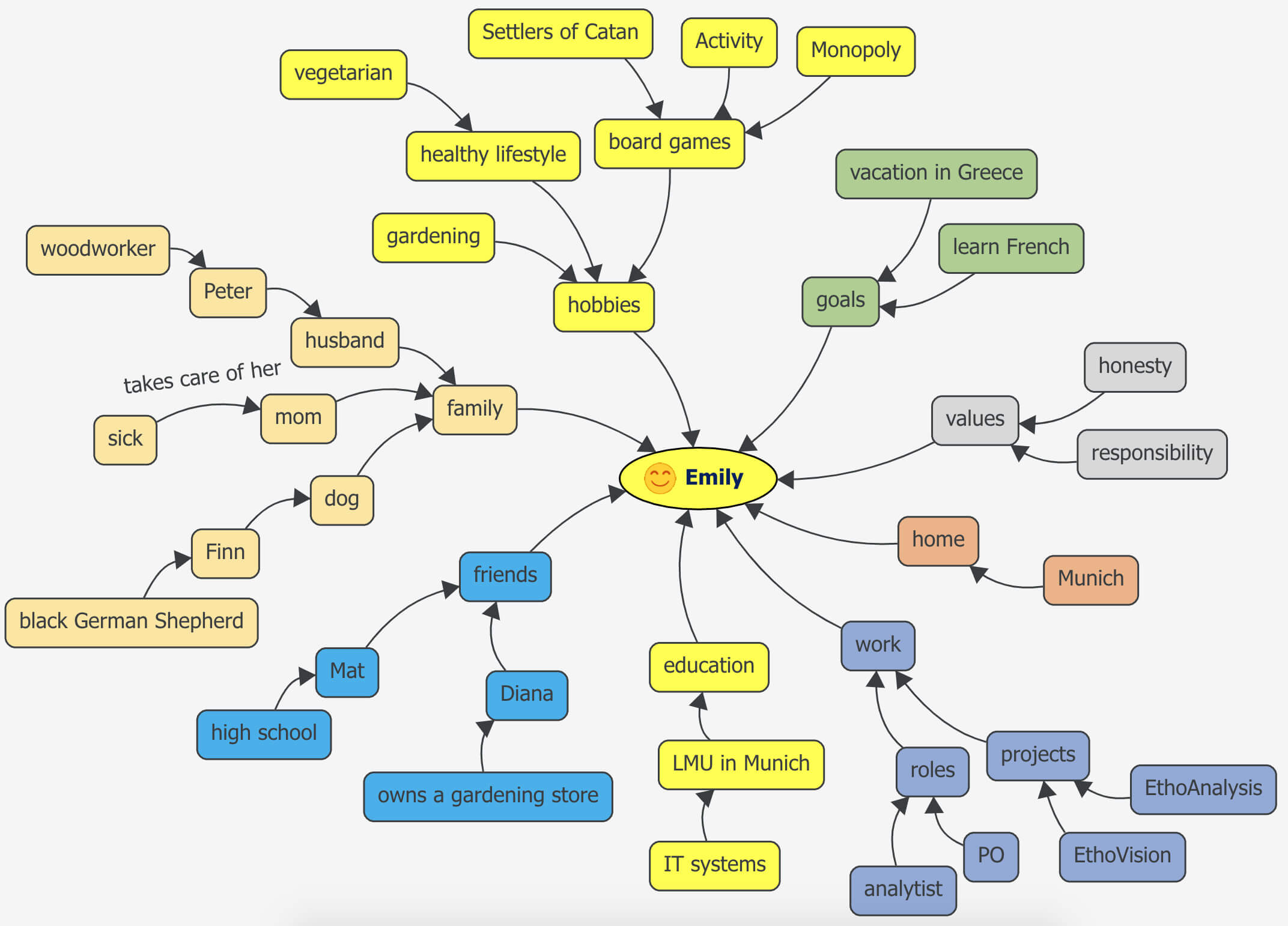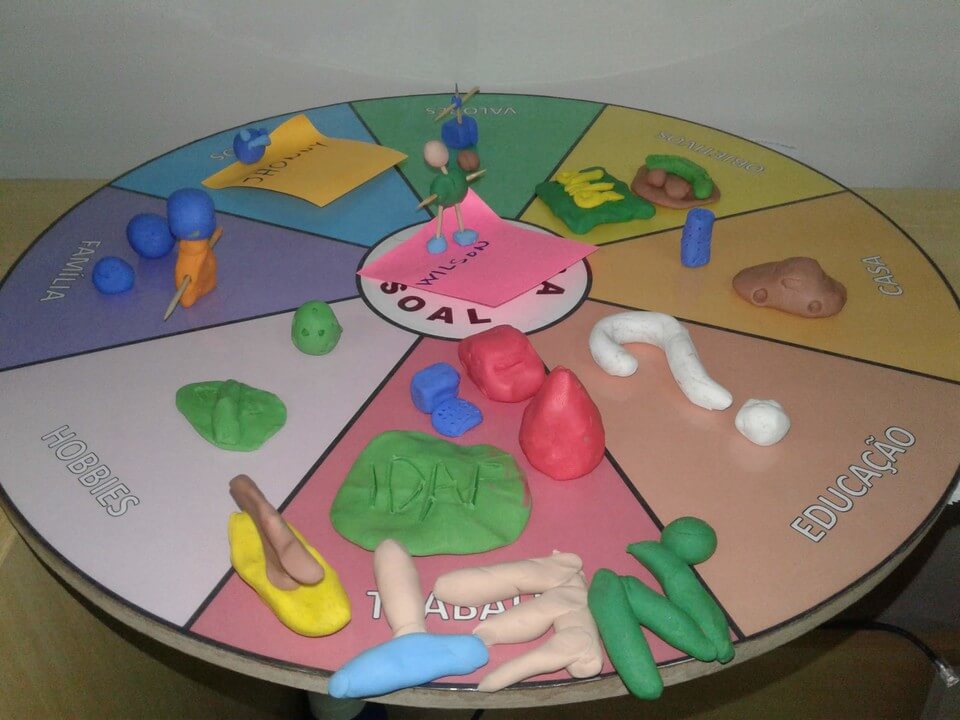Do you feel that your team needs to improve relationships, or do you want to help them get to know each other better? Try personal maps with them, and you will not regret it. A personal map is a technique that helps people find common topics for conversation effortlessly and easily. Get inspired on how to create them easily and how to make them a fun teambuilding activity. And summer is the perfect time for that.
What is a personal map?
A personal map is a mental map of a person. It’s a Management 3.0 technique and is designed to make it easier for you and your team to get to know your colleagues better.
Knowing more about yourself will help you trust each other and form a stronger team.
Because knowing your colleagues is not just about having someone to talk to about the new Avengers movie during your coffee break. It’s about the fact that people can also talk about their personal lives, therefore it is easier for them to empathize together. Even a brief conversation about something that is near and dear to their heart can give a sense of security in the other person.
As a result, we will be less hesitant if, for example, we want to ask for help with work-related things. Likewise, it will be easier for everyone in the team, not just a few noisy individuals, to express their views and respect each other whilst doing so. And this is the main thing that makes the team successful and moves it forward.
In a good team, everyone is equal, and no one is afraid to contribute with their opinion. This is the fundamental thing that can help solve severe problems quickly.
The advantage of creating personal maps is that you integrate each team member equally. You will make the interaction easier for introverts and people who may find it more difficult to start a conversation. You can also easily and quickly integrate a new member into the team. If you have a team that does not spend enough time together in person, the personal map can help to bring them together, at least imaginarily.
How to build personal maps
If you want to introduce your team to personal maps, it’s good to start with an example of your own. Divide it into eight basic categories:
- work,
- education,
- friends,
- family,
- hobbies,
- goals,
- values,
- and home.
Slowly fill out each one. But don’t be afraid to add or edit categories along with what they find interesting. Engage colleagues in the creation process and ask them how you can fill in your map. You will see how much they know about you :).
How to make the mind maps a fun game?
Try the following:
- Each person makes a map about themselves. Subsequently, people exchange their maps and present them. The team then guesses whose map it is.
- Creating maps in pairs. People split into pairs and make personal maps of each other. They will be able to ask and talk about what interests both of them. Gradually try to move with the team to create a map for one person by the entire team.
- Draw the name of the person to make a map about them during the week. During a coffee break or lunch break, try to ask your colleague about the things that would help with filling the map. But beware, it is forbidden to simplify the task by asking questions like ‘What are your hobbies?‘. Present the created map in front of the person. You’ll see how many mistakes you make and how much new information you’ll learn during the week. Plus, the colleague whose map is about will feel like a celebrity during the week because of all the questions about their life :).
- Print the main map with a picture for each person, and gradually fill in the maps. Stick the maps to the wall and leave post-it notes next to them, so that people can stick them to any map. When they go by, they can add what they know or go ask someone about the thing they would like to add to the map. The only rule is that no one can contribute to one’s own map. Gradually, they will fill all the maps and have them in front of their eyes at all times. If they see something interesting, they can discuss it together.
- ‘A test‘ with personal maps. After you have prepared a map for everyone on the team, try a little fun test. In the team, ask each other different questions connected to the maps and reward each correct answer with a small sweet reward.
- Long-distance personal map. If you have a team that only spends a limited time together in person, you can do personal map exercises remotely, for example, via a video call. If you want to fill in the maps continuously and easily create them, you can use RCA Desk in ScrumDesk (you can find the instructions below). Or you can create a personal channel on your Slack where you create a thread for each member and add various facts over time. However, be aware that this requires discipline so that various lengthy discussions and chaos do not dominate the entire channel.
Beware…
A good time for personal maps can be during the retrospective. Make sure that every team member is included in the process equally and that the creation of maps does not last long enough to discourage people.
Likewise, try not to focus the discussion on just one subject, which may interest only 2-3 people.
If personal maps are a new thing for the team, make your first map with them, and then continue with someone who offers to try it out.
Create a personal map in ScrumDesk
You can create personal maps in ScrumDesk using the RCA board very easily. They will be always accessible to your colleagues, you can add new themes and save paper to help forests J. Because anyone can see them or add information at any time, they are the right solution for teams that aren’t physically together.
To create one:
- Open the project in ScrumDesk and then open the RCA tab in the left menu.
- Click Diagrams to open a list of your diagrams. Add a new diagram by clicking ‘+‘ and name it.
- Open the diagram by dragging its tab to the centre of the screen.

- Click on the first node and click ‘…‘ to edit it.
- Type a name in the node and if you want to, you can change the font style, color or add a mark.

- Click ‘Why?‘ to add a new node associated with the original node. This way, you can add all the categories you want to use.

- Fill out each category by adding new nodes.

- If you are interested in a specific node while browsing the map, you can comment on it.

You can also use the RCA Desk in ScrumDesk to create different mind maps to visualize the analysis of the causes of any problem.
How others made it their own
You can change your personal maps by occasion. If you want to celebrate with the team, please feel inspired by the example below.
In this map, everyone has written what reasons they think other team members have to celebrate in their professional and personal lives (e.g. finishing a project, wedding, etc.). Finally, everyone wrote what they should celebrate as a team. That way, everyone learns something new that would not come to mind in the normal work environment. But the main idea was to encourage the team and show each other the benefits everyone has in it.
There’s also another idea that you can use to ‘play‘ with the team and go back to childhood times and that is to create creative 3D maps. Instead of writing everything down, the team simply modelled everything from plasticine. That way, you will for sure practice team problem solving- would you know how to model such patience and other values, for example?
Last few words
The personal map is a good and straightforward technique for bettering and improving relationships in the team. This creative exercise will help you to get to know your colleagues in a fun way and therefore strengthen your team. You can customize the creation process of creating personal maps or make it a short and relaxing activity during which your team can get creatively ‘crazy.‘



